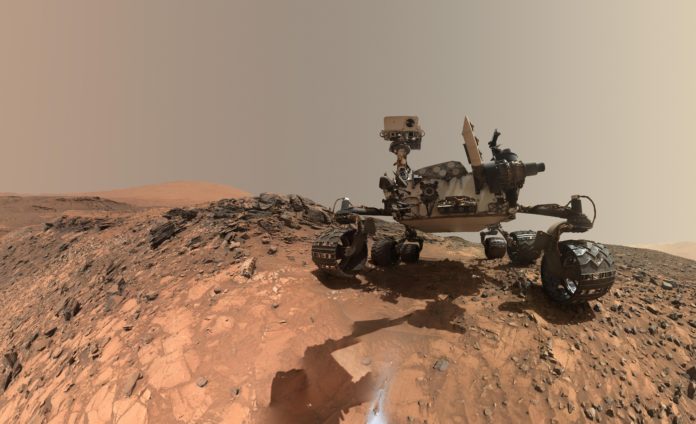A new piece of evidence has been discovered by NASA’s Curiosity rover that suggests there was once life on the Red Planet. On top of that, new evidence has emerged that relates to the search for current alien life. It may not be life itself, but these findings are a significant discovery nonetheless and are a good sign for future Mars missions.
“With these new findings, Mars is telling us to stay the course and keep searching for evidence of life,” says Thomas Zurbuchen, associate administrator for the Science Mission Directorate at NASA Headquarters. “I’m confident that our ongoing and planned missions will unlock even more breathtaking discoveries on the Red Planet.”
Curiosity is of yet to determine the source of the organic molecules. But even without this knowledge, it will present clues as to the planetary conditions in ancient times. While there’s no evidence to suggest life on Mars exists now, there is strong evidence that says it did in the past including a water lake that’s situated inside Gale Crater.
“The Martian surface is exposed to radiation from space. Both radiation and harsh chemicals break down organic matter,” explains Jen Eigenbrode of NASA’s Goddard Space Flight Center and lead author of the two scientific papers. “Finding ancient organic molecules in the top five centimeters of rock that was deposited when Mars may have been habitable, bodes well for us to learn the story of organic molecules on Mars with a future mission that will drill deeper.”
The second paper focused on the discovery of seasonal variations in Mars methane levels over a period of nearly three Mars years (just short of six Earth years). They found that in warm, summer months methane levels are at their peak, while in winter they drop back again. According to Chris Webster of NASA’s Jet Propulsion Laboratory (JPL) and lead author of the second paper, it’s the first time we’ve ever seen anything repeatable like this when it comes to methane, and the only reason we did is that of Curiosity’s longevity.
Rock samples taken from the Martian soil were analyzed by Curiosity’s Sample Analysis at Mars (SAM) instrument suite. The results showed both fragments of sulfur and organic carbon concentrations that are around 100 times greater than that of the surface.
In 2013, organic molecules containing chlorine were detected by SAM. And now, with the discovery of methane, scientists are confident that NASA’s Mars 2020 rover alongside ESA’s (European Space Agency’s) ExoMars rover will find even more organics out there.
More News to Read
- History of Computer Games: Your Essay VS Controversial Prejudice
- AI is Now More Accurate at Diagnosing Skin Cancer than Dermatologists
- What Technologies should you invest in for the Future?
- Researchers Develop Technique that can Remotely Operate Lab-Grown Heart Cells
- Researchers Get Close Up of Bacteria Signaling Using New ‘Movie’ Technique

